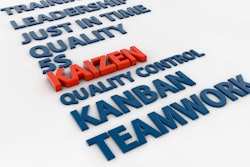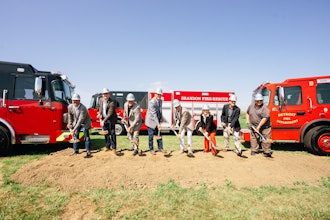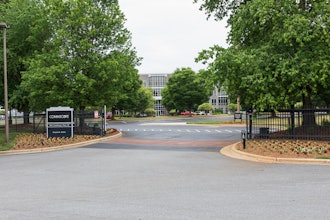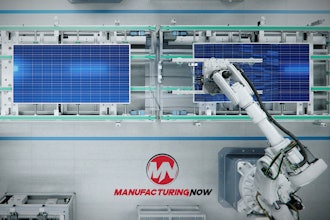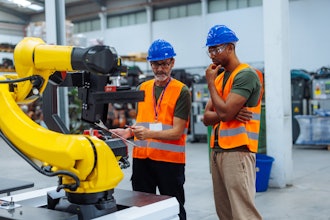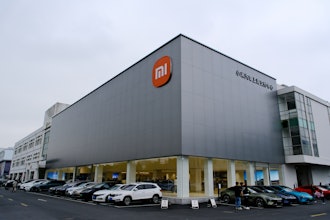To say that Parker Hannifin’s beginnings were accidental isn’t all that far from reality. Engineer and entrepreneur Arthur L. “Art” Parker founded Parker Appliance Co. in 1918. By that point in America’s history, more than a million vehicles on the road formed a potentially lucrative market for Parker’s new pneumatic brake assist booster. A company promotional trip to a winter tradeshow in Boston ended with Parker’s vehicle skidding off of a Pennsylvania road.
The crash resulted in not only the loss of his only truck, but also Parker’s inventory—his entire business. He brushed himself off, returning to an engineering job with his former employer.
Parker stood tall again in 1924, restarting the company and offering tube fitting components, attracting both automotive and industrial customers. One of his first customers was a rather famous one: Charles Lindbergh.
Having enough fuel to make it across the Atlantic posed an enormous engineering challenge—and potentially meant life or death. Leaks on the Spirit of St. Louis were simply unacceptable. Parker fittings were specified for that historic flight.
Aviation had become a burgeoning market. His drive, hydraulics expertise, and reputation for reliable products led to lifelong relationships with leaders of Douglas Aircraft Co. (later, McDonnell-Douglas, which merged with Boeing in 1997) and Lockheed Corp. (today, Lockheed Martin). Both as an individual and company, Parker was instrumental in replacing heavy, mechanical aircraft controls with lighter, more effective hydraulics.
Defying economics of the time, the need for Parker’s products was such that his business grew even through The Great Depression. While the number of private vehicles plummeted, the business continued feeding the maintenance and repair of buses and trucks.
In the mid 1930s, shortly after Industrial Equipment News was launched by the Thomas Publishing Co., the ambitious Art Parker took a major step forward by purchasing from the bankrupt Hupp Motor Co. an enormous, 500,000-square-foot manufacturing facility in Cleveland. Years later, the entire facility was fully utilized by Parker operations. By the end of the decade, Parker Appliance reached $3 million in sales.
Tough times came after World War II, as the company patriotically dedicated all of its resources to the war effort. (Here, women are shown working in the Parker plant during the war.)
When the war ended, so did Parker’s business. Shortly thereafter, Art Parker had a heart attack. With Art’s death in 1945, his wife Helen (Fitzgerald) Parker proceeded to invest his $1 million life insurance policy back into Parker—while also raising four children. She reorganized the company, brought in new management, and was able to get the company up and running again. In addition to acquiring Berea Rubber Company...
...Helen also opened a new Parker plant in Kentucky. According to Jim Cartwright, corporate communications manager, “It was a big step with Helen opening the plant in Kentucky, the first Parker facility outside of Cleveland. It was significant because, for quite awhile, the question was ‘Is there going to be a Parker?’ The answer was, ‘Yes, there is, and here’s evidence that the company’s not only going strong in Cleveland, but it’s also strong enough to expand’.”
During the Korean War, the company was careful to provide what was needed for the war effort without becoming solely dependent on that business.
Another family member was a Parker leader in the making: Patrick S. “Pat” Parker. (See related story on Pat Parker. )
The hard-working, Harvard-educated, eclectic and spirited Pat Parker led the company from the 1960s to the 1990s, with a penchant for innovation and a leadership style that touched the lives of many, both within and outside of Parker. Partly due to his influence and drive to acquire other companies to expand Parker’s portfolio, revenues of the company had increased to about $25 million by the late 1950s. When he was named president in 1968, annual sales had grown to $197 million. He retired from the position of chairman in 1999 and, by the time of his death in 2005, the company had become an $8 billion global giant of pneumatic, hydraulic, and electromechanical products.
Hundreds of patents are attributed to the company, as are nearly as many acquisitions, the largest to date being that of Commercial Intertech in 2000, under Duane Collins, Parker chairman and CEO. The Commercial Intertech merger was a cash-and-stock transaction with an equity value of approximately $366 million. According to Collins, Parker acquired 42 businesses in the 1994-2000 period, totaling $1.1 billion in first-year sales. By 2001, that number had climbed to 58 acquisitions, and is still growing today. Which are the most important acquisitions over the years? “That would be like asking a father to name his favorite children. It’s not going to happen.” says Cartwright.
Even without a Parker at the helm, the company thrives today under the command of Donald E. Washkewicz, chairman and CEO. Washkewicz started with Parker in 1972 as an engineer in the Hose Products division. Continuing his climb through the company’s ranks, he successfully led the Fluid Connectors Group as vice president and, later, the Hydraulics Group as president. According to this BusinessWeek interview, Washkewicz took the reins in 2000, “during one of the worst industrial recessions in history.” Strong in both engineering and business, Washkewicz took tough measures to lean down the company, as well as its manufacturing operations. He carries on the Parker tradition of acquisitions, while also building brands and globalizing.
The result? Stunning growth of nearly $11 billion in annual sales in fiscal 2007.
While the company is known by most for its fluid and gas handling products, it’s in fact prominent today in aerospace, climate control, electromechanical, filtration, hydraulics, pneumatics, process control, and sealing and shielding markets.
Growth continues, largely based on a structure of autonomous yet cooperative business units following the company’s Win strategy.
The Win strategy involves such elements as Winmap (identifying opportunities, along with strategic marketing), Winovation (creating value, along with new product commercialization), and Winvalue (selling value, along with solution selling).
Today, the company’s products can be found in everything from cars and aircraft, industrial plants and oil fields, to the Space Shuttle and Mars Lander. According to Washkewicz, if you could X-ray just about any machine, you’ll find a Parker product.
Fun Facts
- Charles Lindbergh specified Parker fittings for the historic first Atlantic crossing of the Spirit of St. Louis. Unconfirmed rumors have it that a Parker employee even flew to New York on the night before that flight, and actually handed the last needed fitting to Lindbergh himself.
- Parker was immortalized in history during Apollo 11’s touchdown on the moon, when post-lunar landing astronaut dialogue included, “Cycle that Parker Valve.” Operating the valves is mentioned in this Apollo 11 Technical Crew Debriefing. According to a NASA document at this link, the “Parker valves” were used for isolation within the propellant feed systems. They were cycled open and closed immediately after landing. Parker also supplied other valves, fittings, and seals for the mission.
- In 1988, Parker provided more than 1,200 parts for the Space Shuttle.
- Today, Parker is shipping product to Spain for what is believed to be the largest solar field in Europe—the first of 10 that are planned. The company is providing hydraulic rotary actuators that move the equipment’s solar dishes to follow the sun, also providing a feathering action to fold-up the equipment in high winds.
- Under Pat Parker’s leadership, the company began its involvement in developing fuel-cell powered motorcycles and wheelchairs.





